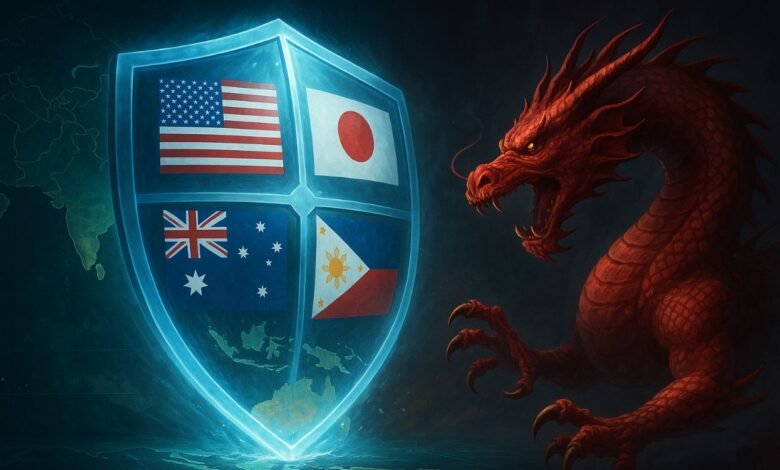
Call for ‘Asian NATO’: US, Japan, Australia, Philippines Urged to Form ‘Pacific Defense Pact’ to Counter China
WASHINGTON — Amid rising tensions in the Indo-Pacific, a new analysis argues that the time has come for the United States and its key regional allies to form a formal, NATO-style collective defense alliance to deter a growing military threat from China.
The proposal calls for the creation of a “Pacific Defense Pact,” which would initially unite four core nations: the United States, Australia, Japan, and the Philippines. Such a pact would establish that an attack on one member is considered an attack on all, a significant step up from the current network of bilateral and informal security arrangements in the region.
A ‘Common Cause’ Against China
The push for a formal alliance is driven by what the analysis calls a “new strategic alignment” centered on the advancing threat from China. Beijing’s geopolitical goal of “the great rejuvenation,” which includes seizing Taiwan and controlling the South China Sea, has prompted nations like Japan, the Philippines, and Australia to fundamentally overhaul their defense strategies.
The report highlights that:
- Japan has moved to acquire “counterstrike capabilities” and is doubling its military spending in response to Chinese incursions near the Senkaku Islands.
- The Philippines has shifted its military focus from internal insurgency to external defense to confront Chinese encroachment in the South China Sea.
- Australia no longer sees itself as geographically protected, now warning that there is “no longer a ten-year window of strategic warning time for conflict” in the region.
Beyond Informal Groupings
While arrangements like the Quad (US, Japan, Australia, India) and AUKUS (Australia, UK, US) have deepened cooperation, the proposal argues they are too informal and lack the “will and capability that only a collective defense arrangement can deliver.”
A formal pact would establish a central headquarters for joint military planning and operations, moving beyond the intermittent coordination that currently exists. It builds on the “new convergence” of security cooperation already seen in the region, such as the informal grouping of the four proposed members—dubbed “the Squad”—conducting joint naval exercises in the South China Sea.
Challenges and Future Scope
The proposal acknowledges that such a pact would face fierce opposition from Beijing, which would likely frame it as “Cold War thinking” and could use economic coercion to pressure potential members.
While the core four are seen as the logical starting point, the pact could later expand to include other advanced allies like South Korea and New Zealand. Critical partners like India and Singapore could participate as observers or in other non-member capacities.
The analysis concludes that despite the challenges, the shared threat from China has made a collective defense pact in Asia not only viable but essential for future peace and stability.




